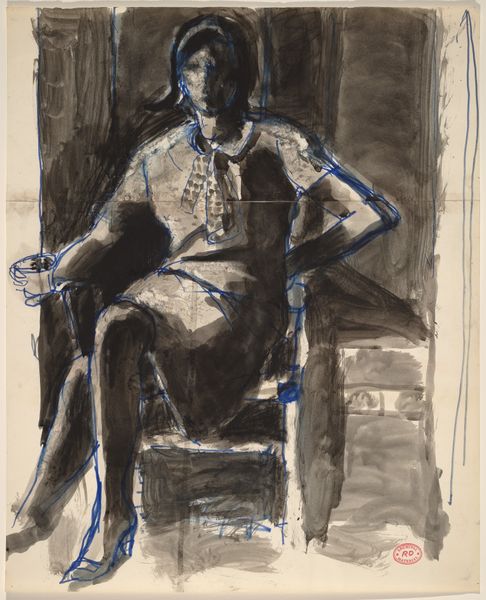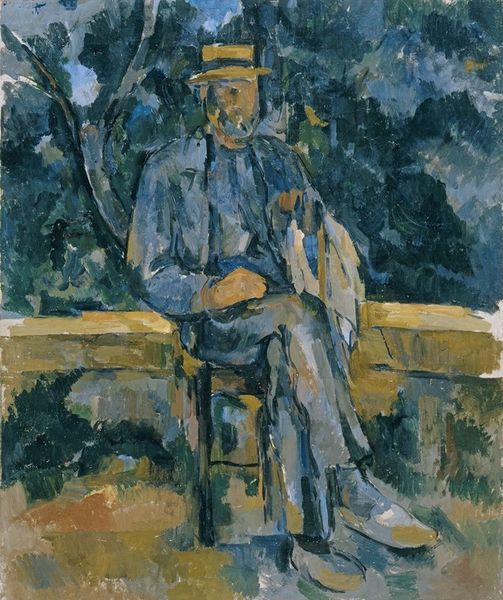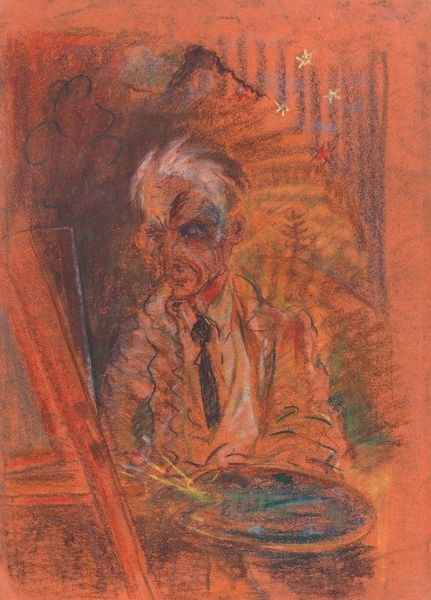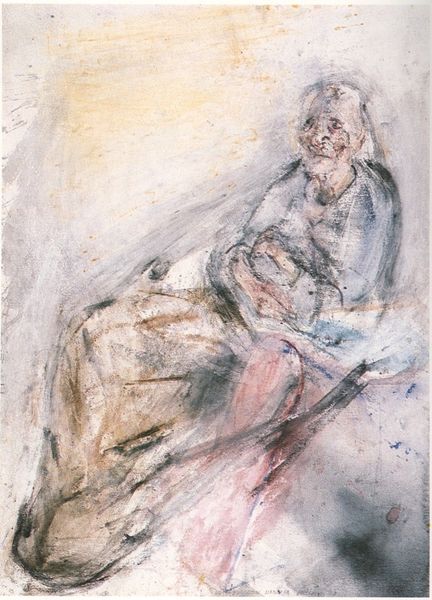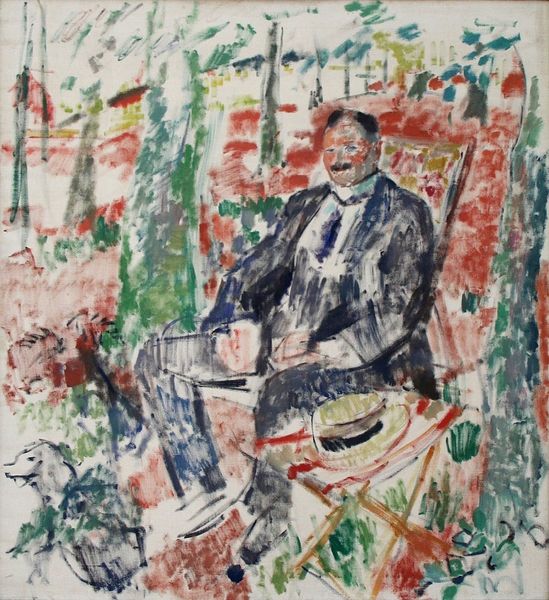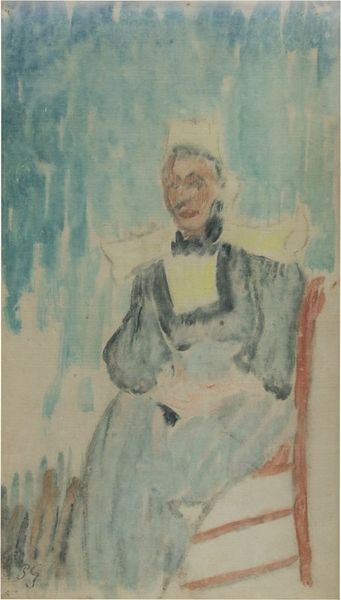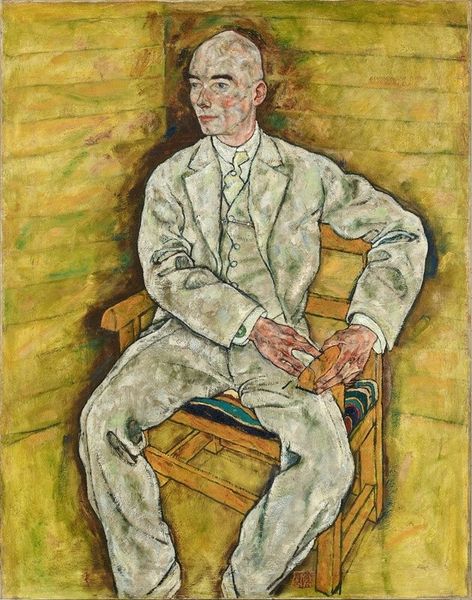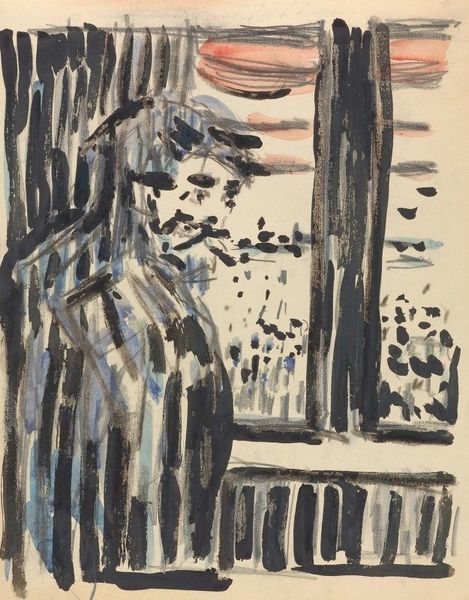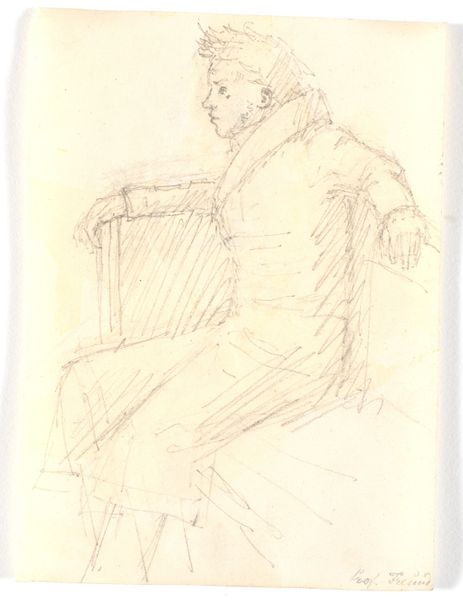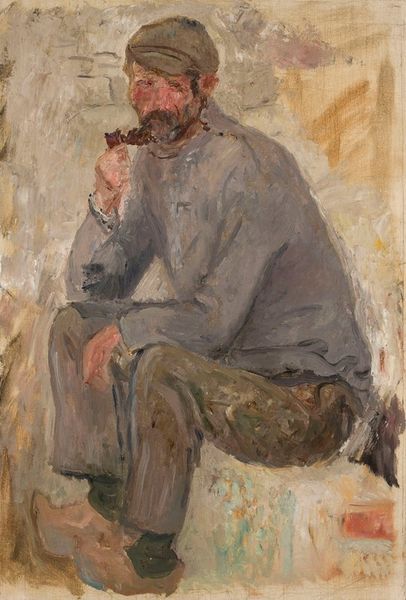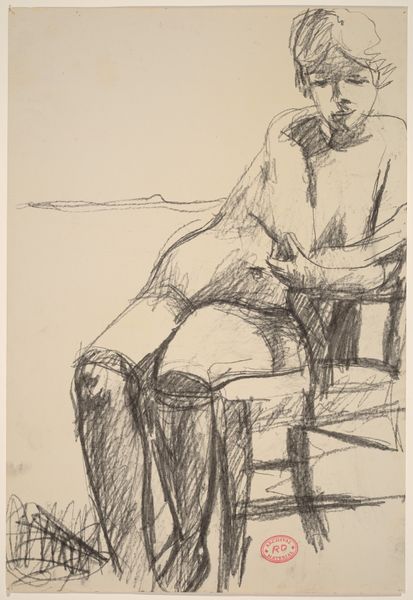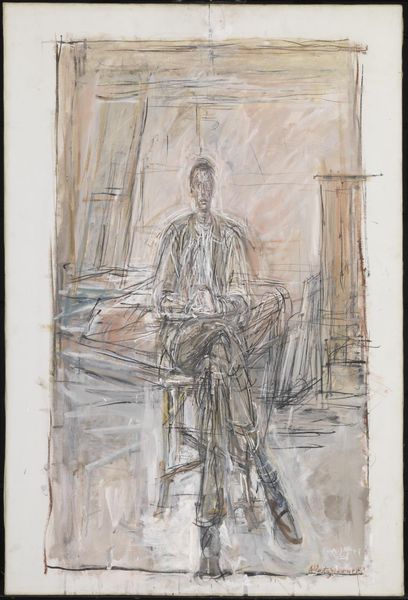
Copyright: Public Domain: Artvee
Curator: Oh, look at this: Paul Cézanne's "Man Wearing a Straw Hat," dating from 1905-1906. It's watercolor on paper. Such lightness... Editor: It feels incomplete, ephemeral even, as if the man could just dissolve back into the blue from whence he came. A seated portrait filled with… absence, strangely. Curator: Absence maybe, but consider the context. Late Cézanne. He was increasingly drawn to the watercolor medium, plein-air techniques. This loose application allows the subject and environment to become interwoven. Editor: Yes, the interpenetration of space is striking. The figure’s blue jacket merges seamlessly with the blue of the sky, maybe? He's a man tethered to nature and perhaps a reflection of nature's dominance over the individual. Curator: Perhaps. I love how the hat becomes a point of focus. The man's expression is obscured but that hat speaks volumes about the light, the sun. I can almost feel its shade. You think of the labor that connects him to the land. Editor: The straw hat hints at a specific laboring class, doesn't it? A life lived outdoors. There’s an inherent vulnerability too, I think. The man's seated, relaxed…but also exposed in plein air and to the artist's intense gaze. We look at those features and know him without knowing who he is or what his individual struggles are. Curator: Mmm, gaze... struggle… you always find a way, don't you? But yes, this feels like a deeply human document, and it is quite beautiful because it lets go of that specific struggle in exchange for being a symbol, and more like the essence of something essential. Editor: Always, but I am reminded of how race, class, and gender function when looking at art historical depictions of labor. Well, thanks for pulling me back down to earth... even if I will never fully relinquish myself from a critical way of seeing! Curator: Of course, never! And now look at what we did here together; now I have even another view!
Comments
No comments
Be the first to comment and join the conversation on the ultimate creative platform.
